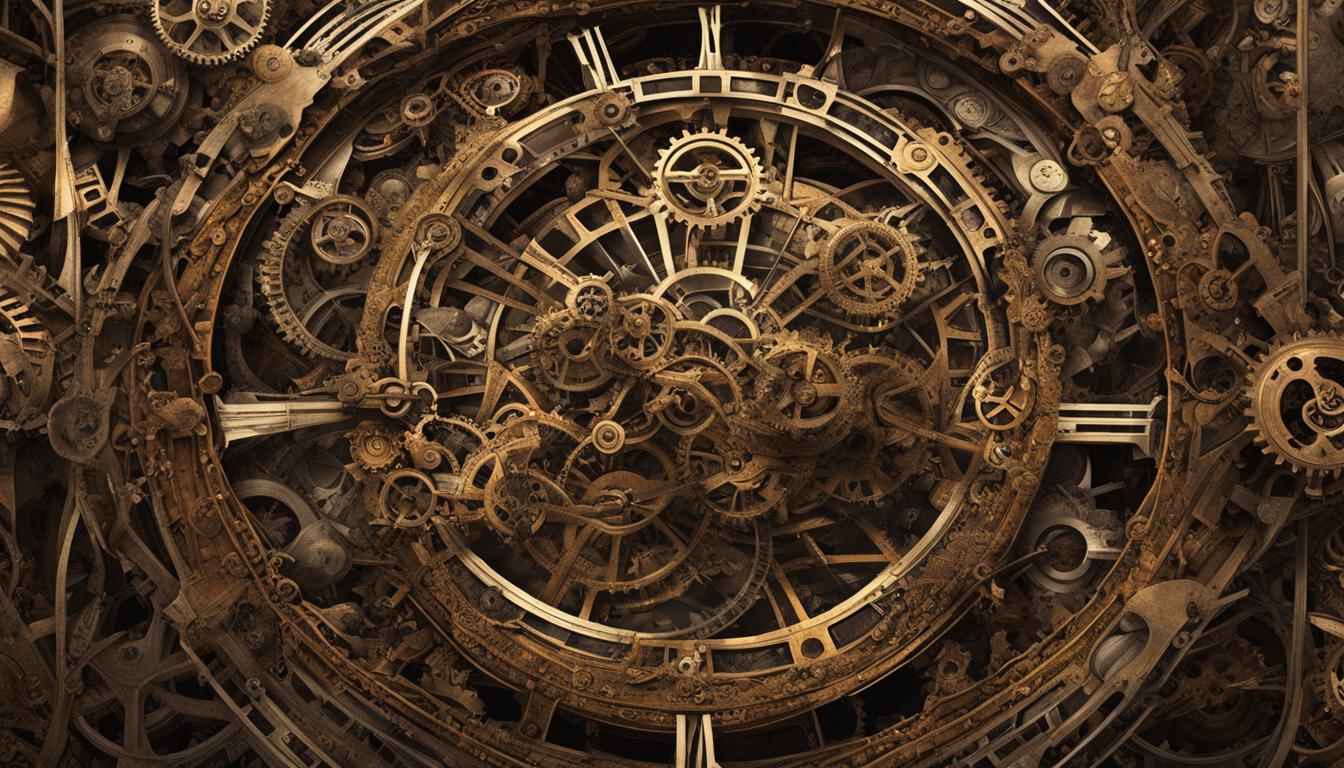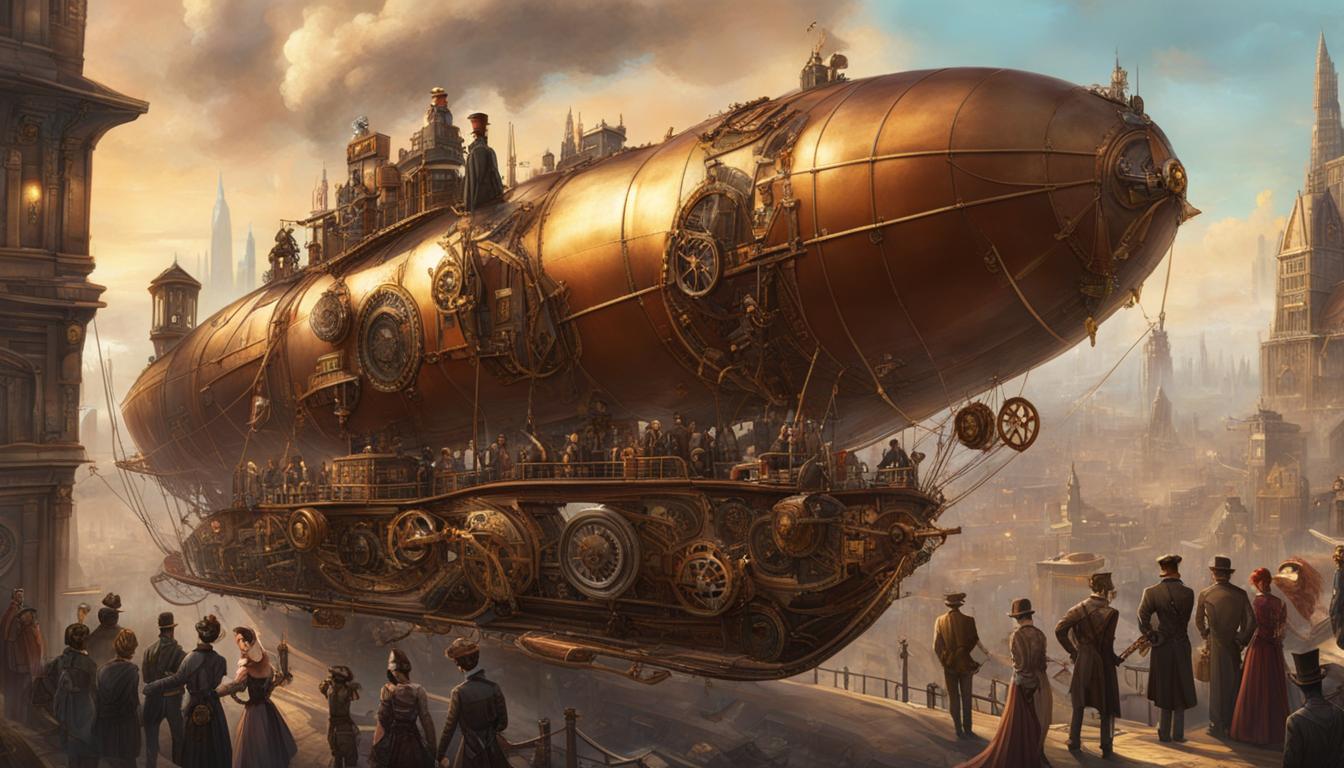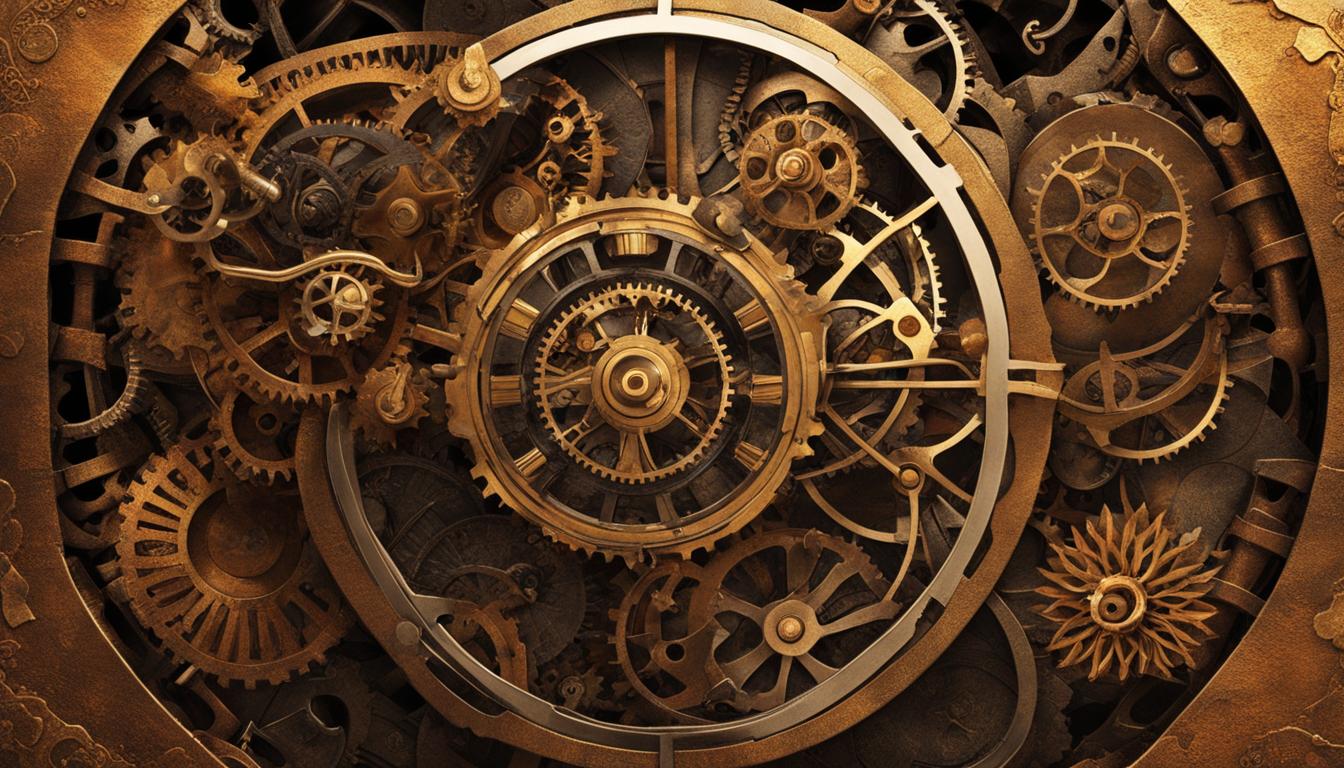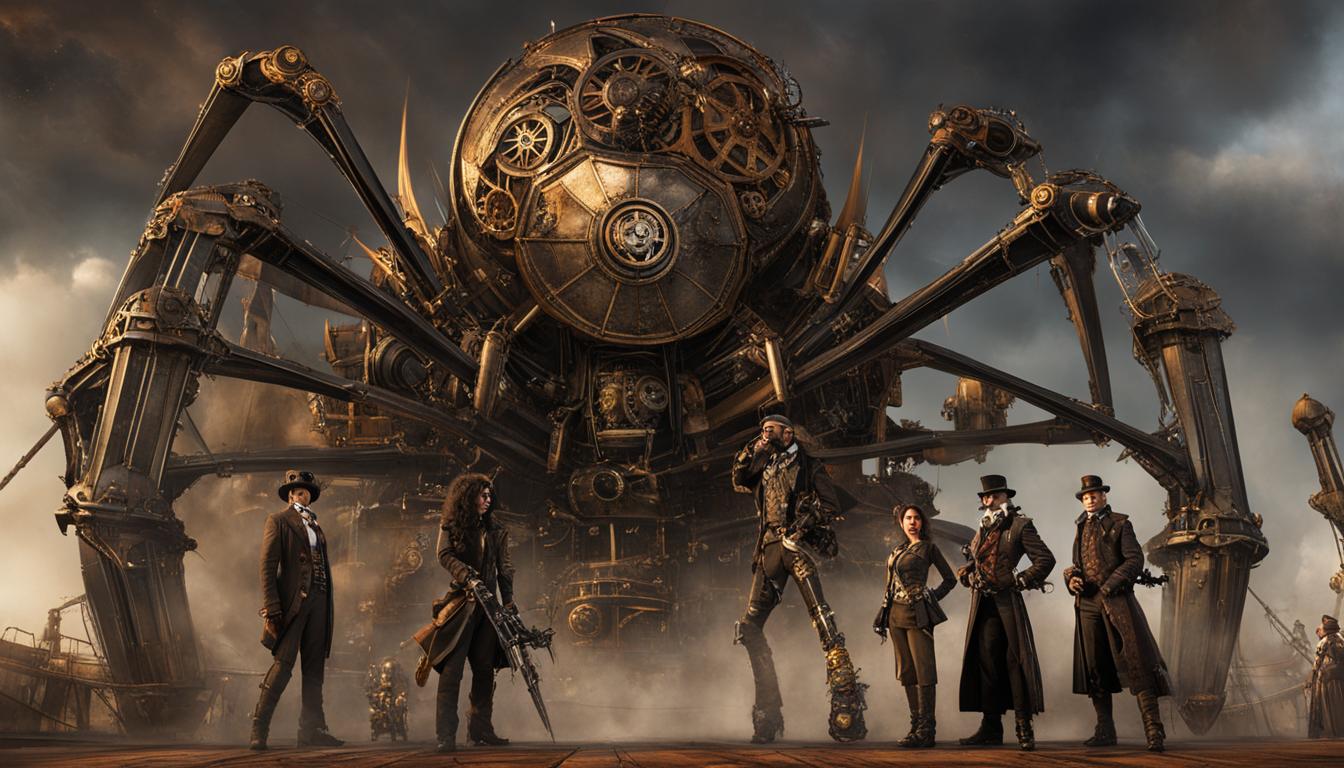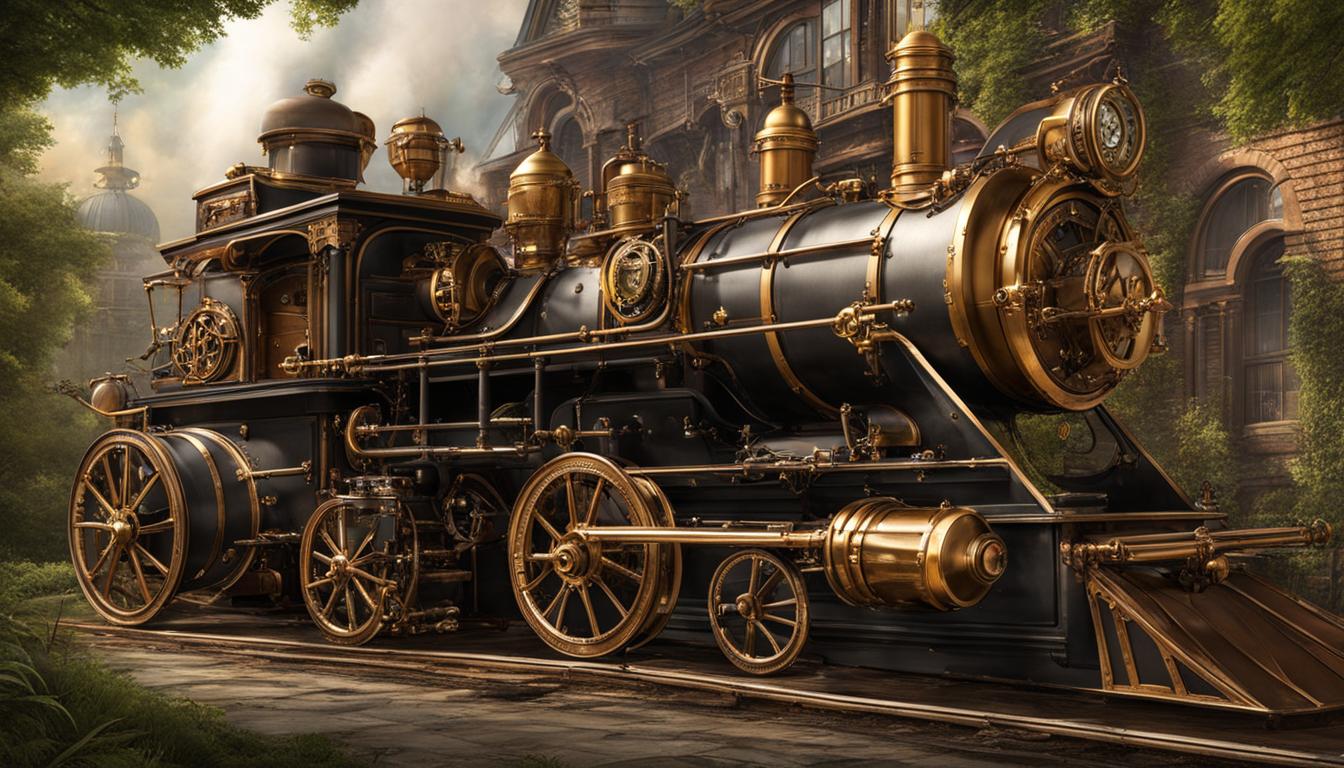Steampunk, an aesthetic movement that has captured the imagination of many, draws heavily from the imagery and themes of industrialization in the 19th and early 20th centuries. In a world where steam and electricity remained the primary sources of power, steampunk envisions a society where Victorian-era technology and design combine with futuristic elements.
Factories with their boilers, pipes, gears, and workers in helmets and goggles serve as a rich source of inspiration for steampunk artists. This unique fusion of industrial machinery and Victorian aesthetics creates a visually striking and immersive experience for enthusiasts and fans.
But what is the connection between industrialization and steampunk? How did the industrial revolution shape the birth and development of this intriguing aesthetic? And what does steampunk have to say about industrial progress and the changes it brought about?
Join us as we delve into the impact of industrialization on steampunk aesthetics, uncovering the link between the industrial era and this captivating cultural movement. Discover how factories, machinery, and technological advancements have played a significant role in shaping steampunk’s visual elements and themes.
Key Takeaways:
- Steampunk draws inspiration from the imagery and themes of industrialization in the 19th and early 20th centuries.
- The industrial revolution had a significant impact on the birth and development of steampunk aesthetics.
- Factories, machinery, and technological advancements are prominent features in steampunk art and fashion.
- Steampunk offers a unique perspective on industrial progress and serves as a commentary on its consequences.
- The fusion of industrial machinery and Victorian aesthetics creates a visually striking and immersive experience.
The Industrial Revolution and the Birth of Steampunk
The Industrial Revolution, a pivotal period in history during the 18th and 19th centuries, played a crucial role in the emergence of the steampunk aesthetic. This era witnessed unprecedented advancements in technology and the rise of factories, leading to a profound transformation in society. The influence of factories and industrial machinery on the birth of steampunk cannot be underestimated.
Steampunk artists and creators were drawn to the imagery and themes of industrialization, finding inspiration in the iconic elements of factories. Boilers, pipes, gears, and the workers themselves, wearing protective goggles and helmets, became prominent features in steampunk art and fashion. The machinery of the locomotives and firearms of the industrial age also played a significant role in shaping the visual language of steampunk.
The fusion of Victorian-era aesthetics with industrial elements created a unique aesthetic that defines steampunk. Through their artwork, steampunk artists reflect the fascination with the period of industrial progress and reimagine a world where steam and electricity remained the primary sources of power. This alternative timeline allows for exploration of the consequences and societal implications of rapid technological development.
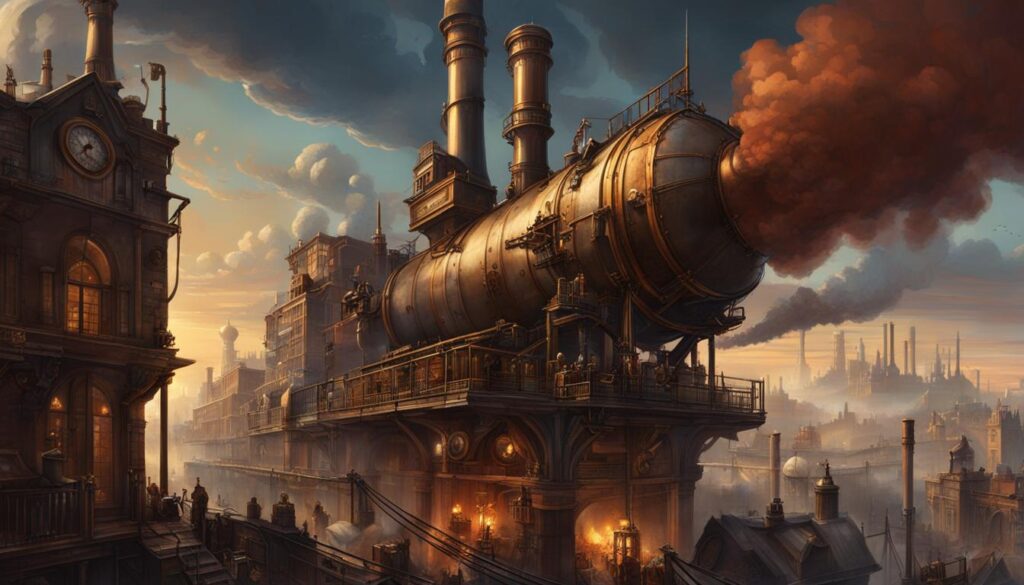
Table: Industrial Revolution Influences on Steampunk
| Influences | Description |
|---|---|
| Factory Atmosphere | Steampunk draws inspiration from the imagery of factories, incorporating elements such as boilers, pipes, and gears into its visual aesthetic. |
| Industrial Machinery | The machinery of the industrial age, such as locomotives and firearms, provides a rich source of inspiration for steampunk artists. |
| Workers’ Attire | The iconic helmets and goggles worn by industrial workers become a visual motif in steampunk fashion and art, symbolizing the industrial era. |
The Industrial Age’s Influence on Steampunk Culture
The industrial age had a profound impact on the development of steampunk culture, shaping its visual aesthetics, themes, and overall identity. Steampunk artists draw inspiration from the machinery and technological advancements of the time, incorporating industrial elements into their artwork and designs. From intricate gears and cogs to steam-powered contraptions, industrial machinery plays a central role in creating the distinctive steampunk aesthetic.
In steampunk art, the link between the industrial era and the genre is evident in the fusion of Victorian-era design with futuristic elements. This juxtaposition captures the imagination and fascination with the progress of the industrial age, offering a unique vision of a world where steam and electricity remained the primary sources of power. Through this visual storytelling, steampunk reflects on the societal and cultural implications brought about by industrialization.
| Industrial Age’s Influence | Steampunk Culture |
|---|---|
| Industrial machinery in steampunk art | The incorporation of industrial machinery, gears, and cogs into steampunk artwork creates a visually striking and immersive experience for enthusiasts and fans. |
| Link between industrial era and steampunk | Steampunk’s fusion of Victorian design and futuristic elements represents a reimagined world where the technological progress of the industrial era persisted. |
Overall, the influence of the industrial age on steampunk culture is undeniable. It serves as a reminder of the transformative power of industrialization and its lasting impact on society. By incorporating industrial elements into their art and design, steampunk artists pay homage to this pivotal period in history while offering a unique perspective on industrial progress and its consequences.
Steampunk’s Take on Industrial Progress
Steampunk offers a captivating perspective on industrial progress, shaping the narrative around the role of industrialization in its unique aesthetic and cultural movement. By reimagining a world where steam and electricity remained the primary sources of power, steampunk explores the consequences of rapid technological advancements. It acts as a creative outlet to question the societal, political, and environmental implications of industrial changes.
Through its visual elements and themes, steampunk serves as a commentary on the transformative effects of the industrial age. It embraces the industrial roots by incorporating machinery, gears, and cogs into its artwork, depicting a fusion of Victorian-era aesthetics and cutting-edge steam-powered technology. This juxtaposition sparks curiosity and intrigue, inviting the audience to reflect on the contrasting aspects of progress and the nostalgia for a bygone era. Steampunk’s imaginative scenarios prompt contemplation on the choices and sacrifices made during the age of industrialization.
Steampunk’s fascination with industrial progress extends beyond aesthetics. It delves into the societal implications of technological advancement, exploring alternative histories and potential futures. With its reimagined gadgets and contraptions, it challenges our perceptions of progress and encourages critical thinking about the direction of innovation. Through the lens of steampunk, industrial changes become a backdrop for storytelling, provoking conversations about the consequences of rapid development and the balance between scientific advancements and societal well-being.
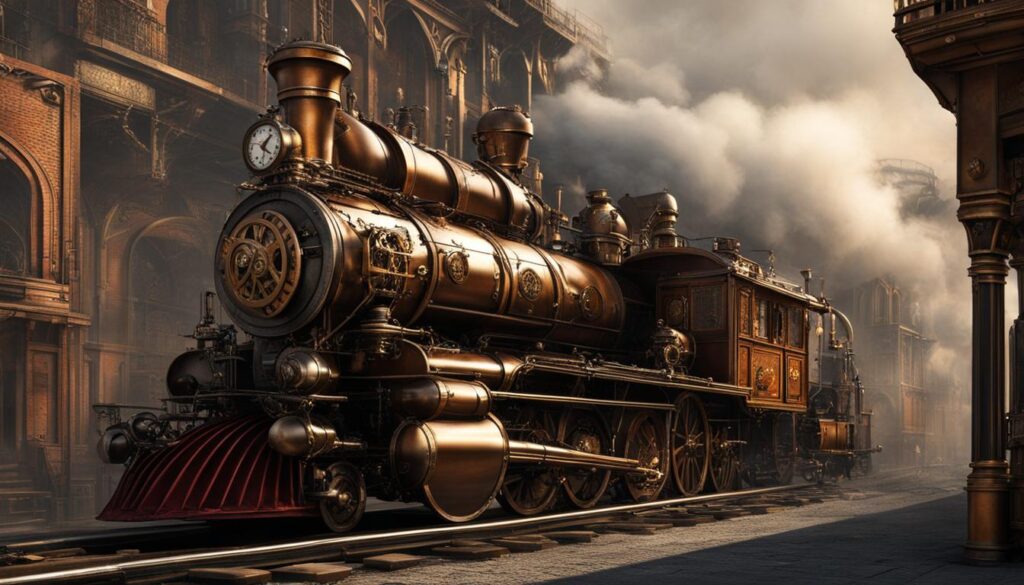
Steampunk’s Commentary
“Steampunk offers an engaging blend of nostalgia and speculation, reflecting on the industrial changes that shaped our world and offering a fresh and thought-provoking commentary on progress. It inspires us to consider the consequences of our actions and the paths we choose as a society, while reminding us of the beauty and awe of the industrial age. Steampunk is more than just an aesthetic; it is a reminder to approach progress with caution and to consider the long-term impact of our choices.”
Steampunk’s take on industrial progress goes beyond a mere celebration or critique of the industrial era. It invites us to marvel at the ingenuity of the past while questioning the direction of our future. With its blend of Victorian elegance and technological marvels, steampunk offers a whimsical and enigmatic journey into a world where steam-powered possibilities abound.
Steampunk’s Unique Visuals and Aesthetic Elements
Steampunk’s aesthetics are rooted in the industrial era, drawing inspiration from the machinery, factories, and technological advancements of the 19th and early 20th centuries. This influence is evident in the visual elements that define steampunk art and fashion. The incorporation of industrial machinery such as gears, cogs, and pipes creates a distinct aesthetic that sets steampunk apart.
One of the key features of steampunk’s visuals is the attention to detail. Artists often create intricate designs that showcase the inner workings of steam-powered contraptions. The use of Victorian-era design elements further enhances the immersive experience and adds a touch of nostalgia to the overall aesthetic. Whether it’s a stunning piece of steampunk artwork or a meticulously crafted costume, the intricate details of the industrial machinery in steampunk make it visually captivating.
Furthermore, the influence of factories on steampunk is undeniable. The iconic imagery of factories with their towering smokestacks, massive boilers, and rows of workers in goggles and helmets has become synonymous with the steampunk genre. This industrial influence can be seen not only in the visual elements but also in the themes and narratives explored by steampunk creators.
“Steampunk is a genre that allows us to reimagine the industrial era with a touch of fantasy and adventure,” says renowned steampunk artist Emily Brass. “The fusion of industrial imagery and Victorian aesthetics creates a visually striking world that captures the imagination and invites viewers to explore alternative timelines.”
Table: Industrial Elements in Steampunk Art
| Industrial Elements | Description |
|---|---|
| Gears and Cogs | Visible mechanical components that symbolize the machinery and technology of the industrial era. |
| Pipes and Gauges | Industrial pipes and pressure gauges often incorporated into steampunk designs to evoke a sense of functionality and mechanical ingenuity. |
| Steam-powered Contraptions | Intricate devices powered by steam that serve as the centerpiece of steampunk artwork, showcasing the creative possibilities of Victorian-era technology. |
| Factory-inspired Architecture | Buildings and structures with a distinctive industrial aesthetic, featuring exposed beams, metalwork, and other architectural elements reminiscent of factories. |
Steampunk’s unique visuals and aesthetic elements not only captivate audiences but also provide a platform for creative expression and storytelling. As the genre continues to evolve, artists and creators find new ways to incorporate industrial imagery into their works, pushing the boundaries of steampunk aesthetics and inviting viewers to embark on a journey through a fantastical world where the industrial era never ended.
The Significance of Industrialization in Shaping Steampunk
Industrialization has had a profound impact on shaping the steampunk aesthetic and cultural movement. By drawing inspiration from the industrial era and combining it with Victorian aesthetics, steampunk offers a unique interpretation of industrial progress and its consequences. This fusion of elements raises thought-provoking questions and serves as a medium for commentary on societal, political, and environmental issues.
In steampunk, industrialization plays a crucial role in imagining alternative histories and futures. It presents a world where steam and electricity remained the dominant sources of power, challenging the notion of progress and technological advancements. Through its visual elements and intricate details, steampunk captures the imagination, evoking a sense of wonder and fascination with the industrial age.
Steampunk offers a creative outlet for individuals to explore the possibilities and implications of industrialization, both past and future, while providing a unique perspective on the consequences of rapid development and technological advancements.
The link between the industrial era and steampunk is evident in the incorporation of machinery, gears, and cogs into steampunk art and fashion. These industrial elements serve as a reminder of the technological advancements and societal changes brought about by the industrial revolution. Steampunk’s take on industrial progress goes beyond a mere aesthetic, delving into the social, political, and environmental impacts of industrialization.
The Role of Industrialization in Shaping Steampunk
Steampunk serves as a visual and creative commentary on industrial progress, offering a glimpse into an alternative timeline where steam-powered technology remains prevalent. It invites individuals to question the consequences of rapid development and consider the societal implications of industrial changes. Through its unique visuals and aesthetic elements, steampunk captivates its audience, igniting curiosity and sparking conversations.
| Key Aspects | Description |
|---|---|
| Visual Aesthetics | Steampunk incorporates industrial elements such as machinery, gears, and cogs into its artwork and fashion. |
| Alternative Timelines | Steampunk imagines a world where steam and electricity remained dominant, challenging traditional notions of progress. |
| Societal Commentary | Steampunk serves as a medium for commentary on the social, political, and environmental impacts of industrialization. |
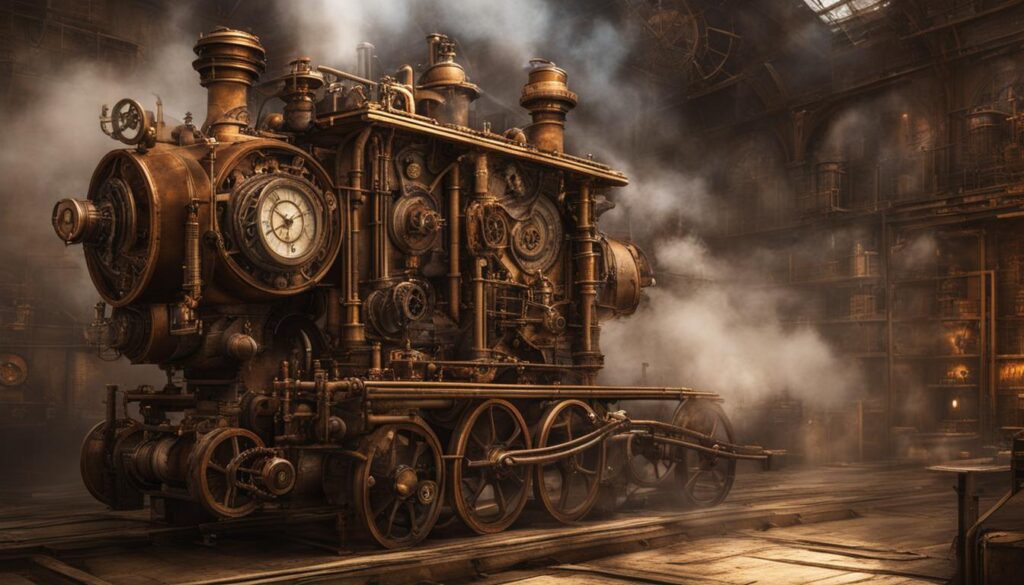
Steampunk offers a fresh perspective on industrial progress, encouraging individuals to explore the complexities and consequences of technological advancements through its captivating visuals and thought-provoking themes.
Conclusion
The impact of industrialization on steampunk aesthetics is undeniable. Steampunk draws inspiration from the imagery and themes of the industrial era, incorporating elements like factories, machinery, and technological advancements into its unique visual style. It offers a captivating commentary on industrial changes, questioning the consequences of rapid progress and imagining alternative timelines where steam and electricity remain the driving forces.
Through its fusion of Victorian-era aesthetics with futuristic elements, steampunk captures the imagination and fascination with the industrial age. It serves as a creative outlet for artists and enthusiasts, allowing them to reimagine a world shaped by industrialization. While celebrating the advancements of the industrial era, steampunk also raises important questions about the social, political, and environmental implications of industrial progress.
By exploring the impact of industrialization on steampunk aesthetics, we gain a deeper understanding of the movement’s origins and intentions. Steampunk’s unique visuals and aesthetic elements provide a visually striking and immersive experience, while its commentary on industrial changes invites reflection and contemplation. Whether through art, fashion, literature, or film, steampunk continues to captivate audiences with its witty and mysterious exploration of the industrial revolution’s influence on our collective imagination.
FAQ
What influences steampunk aesthetics?
Steampunk aesthetics draw heavily from the imagery and themes of industrialization in the 19th and early 20th centuries.
How does the industrial revolution relate to steampunk?
The industrial revolution had a significant impact on the birth of steampunk aesthetics, as artists and creators began looking to the imagery and themes of industrialization for inspiration.
What elements from the industrial age are incorporated into steampunk art?
Steampunk artists often incorporate industrial machinery and elements into their artwork, ranging from intricate gears and cogs to steam-powered contraptions.
What is the link between the industrial era and steampunk?
The industrial roots of steampunk are evident in the use of Victorian-era technology and design combined with futuristic elements, creating a unique aesthetic that captures the imagination and fascination with the progress of the industrial age.
What does steampunk reflect on in terms of industrial progress?
Steampunk serves as a commentary on the rapid advancements of the industrial age and the effects it had on society, raising questions about the consequences of technological developments and reflecting on the social and political implications that arise from them.
How does steampunk incorporate visual elements from the industrial era?
Steampunk incorporates industrial imagery such as machinery, gears, and cogs into its artwork, creating intricate designs and mechanisms reminiscent of the steam-powered technology of the industrial age.
What is the role of industrialization in shaping steampunk?
The period of industrialization and the resulting societal changes provide a backdrop for steampunk’s exploration of alternative histories and futures, offering a unique perspective on industrial progress and its consequences.

